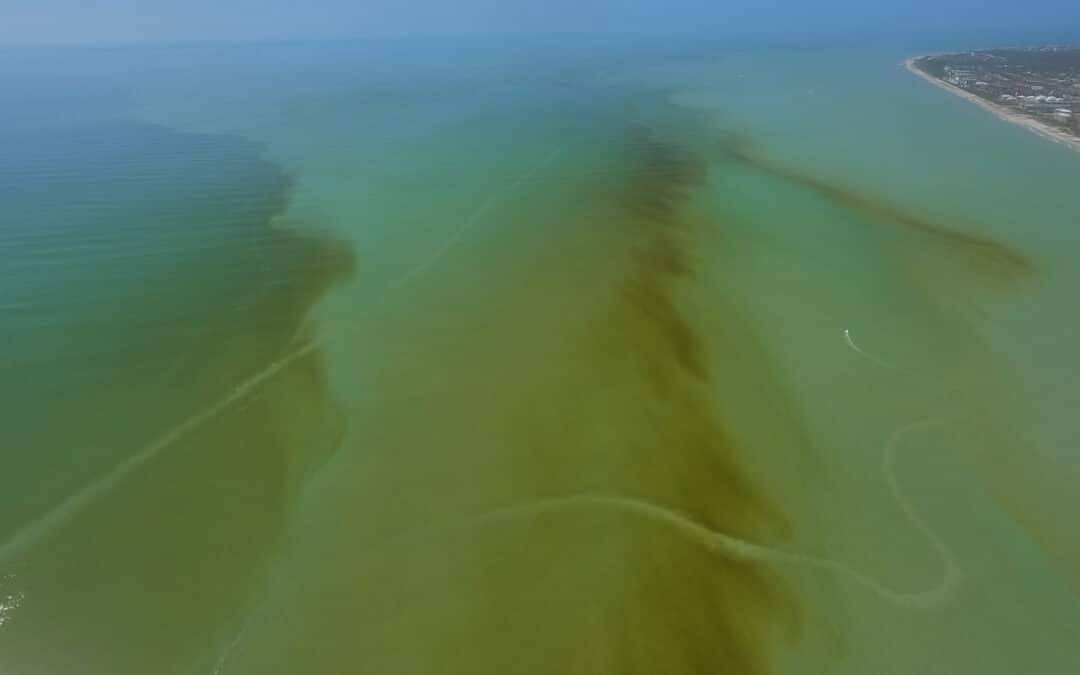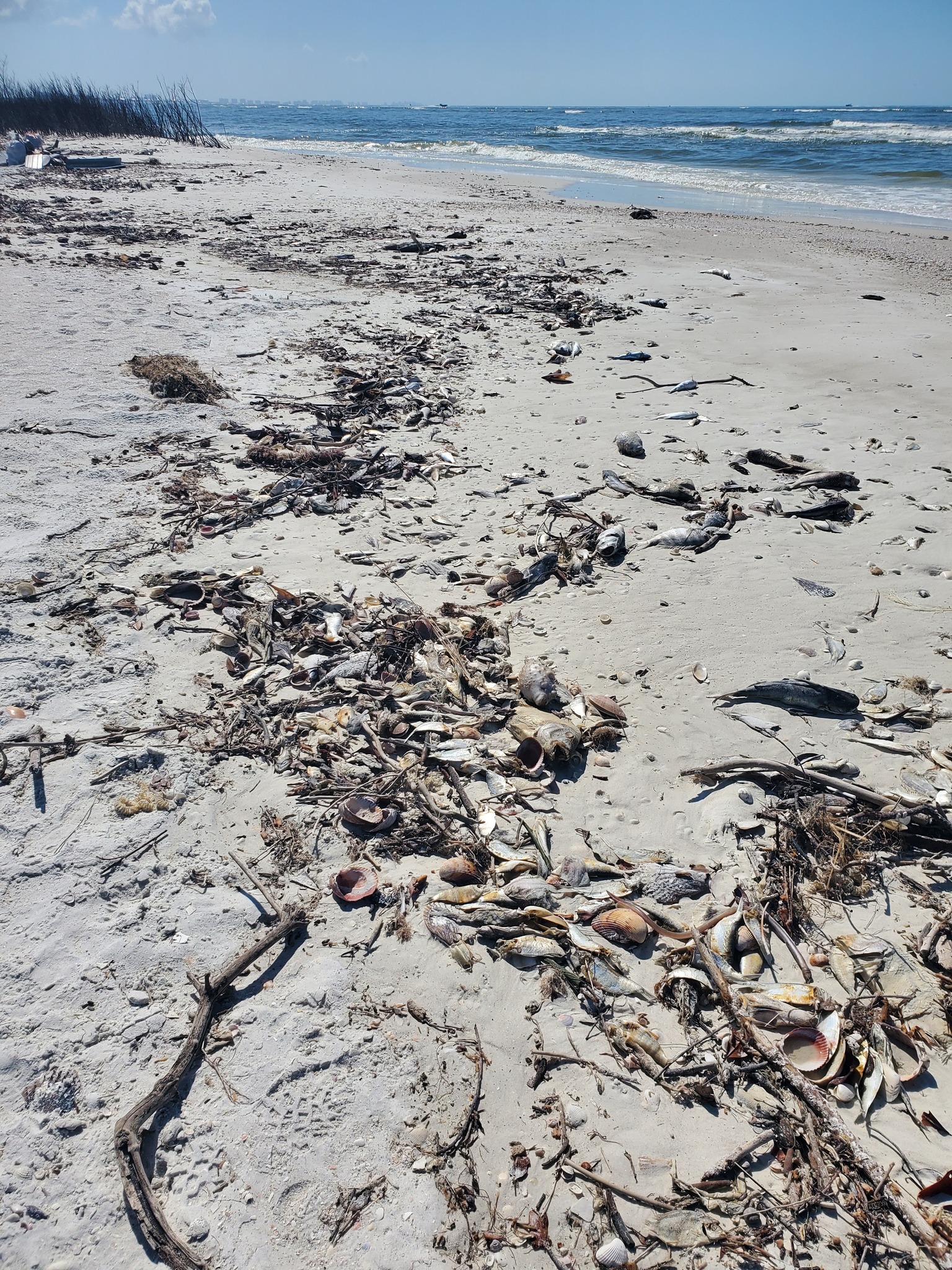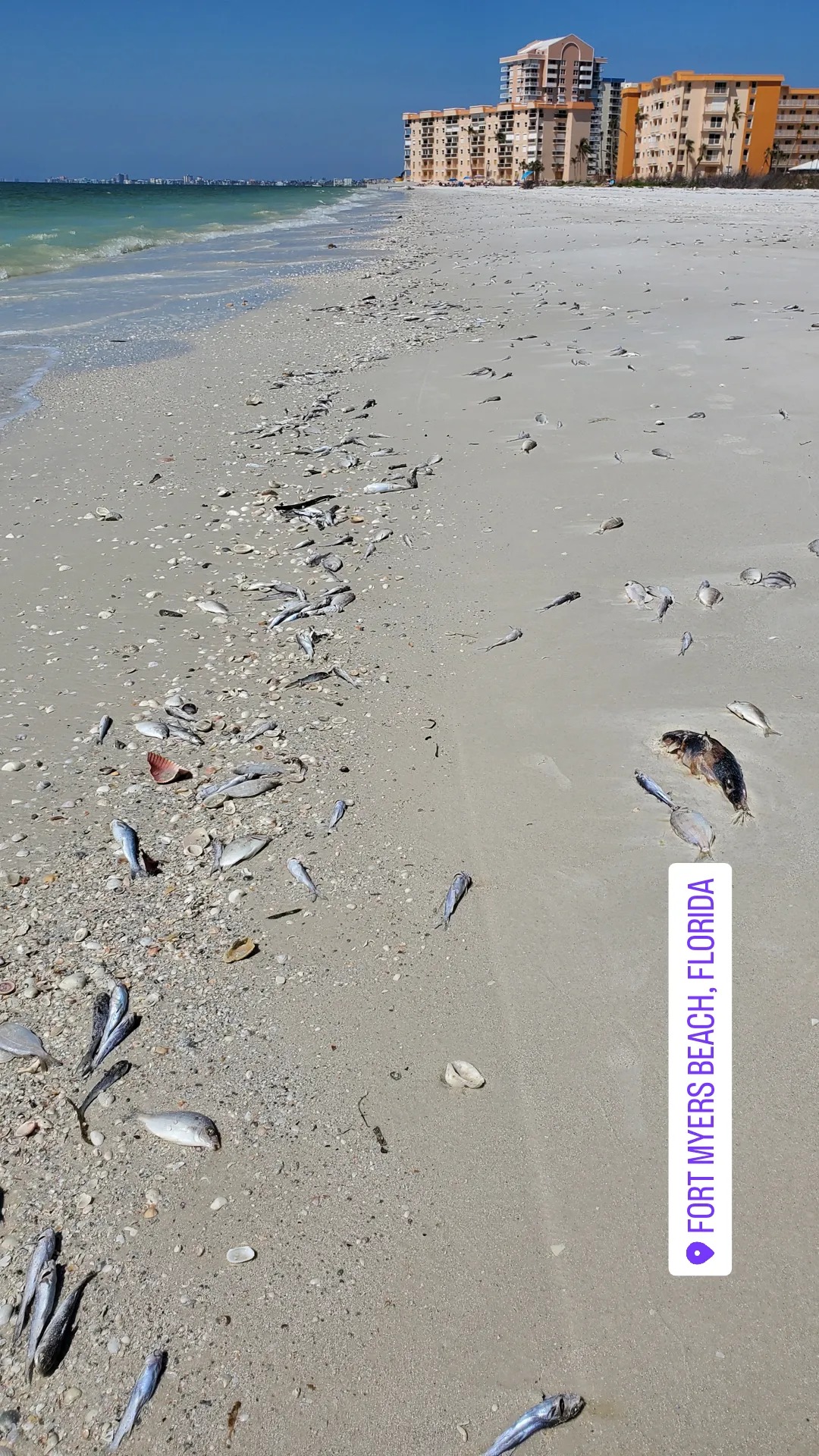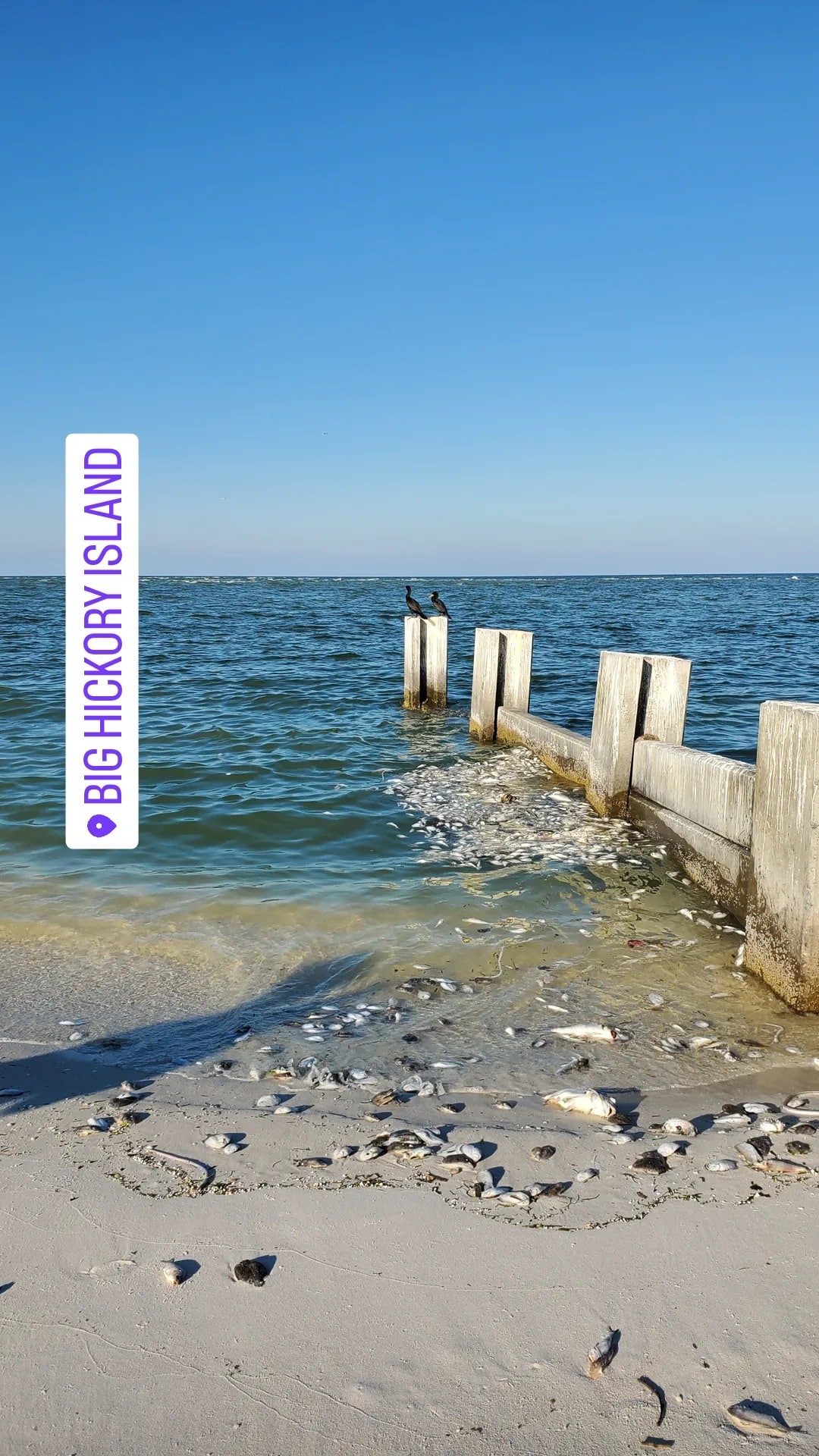For the last several weeks, red tide has brought intense respiratory irritation to beachgoers, hundreds of thousands of dead fish, and several dead sea turtles and dolphin to our beaches. At this moment, we can be thankful that the red tide concentrations appear to be diminishing around Fort Myers Beach, Sanibel, Bonita and Naples. You can find the latest data from Florida Fish & Wildlife’s website.
This fishkill event started with tens of thousands of catfish and eels, which were particularly dangerous to bare-footed beachgoers due to the spines on the catfish. A few days later, thousands of large red drum and grouper, and an increasing diversity of smaller fish and crabs. Recently, hundreds of horseshoe crabs have washed ashore, which is particularly devastating as this should be their breeding season. After a couple of weeks of accumulating dead fish, the toxic gasses from the rotting fish produced more respiratory irritation than the red tide itself.
Calusa Waterkeeper Director of Engagement and Advancement Robin Serne has been on Fort Myers Beach almost daily for the last month, and has watched the progression of the red tide. “Seeing the devastation left on land by Hurricane Ian, and then looking to the shoreline and seeing an endless vista of dead fish every day has been depressing,” Robin admitted. Adding, “What I really worry about is that our ecosystems are facing so many different stressors at once. It’s not just the red tide, its nutrients in the water, increasing ocean temperatures, chemicals and toxins from roads and industry, it’s loss of nursery habitat in our estuaries due to development, plastic pollution, overfishing, and on and on.”
So What Can We Do?
We need to create positive change in our own lives, and with state and local policies that can reduce our nutrient pollution into our waters. Red tide is naturally occurring, but it is made worse by the nutrients coming off the land from the hurricane surge, stormwater runoff, and Lake Okeechobee outflows. In fact, recent peer-reviewed research has found that “nitrogen-enriched Caloosahatchee River discharges have consistently intensified K. brevis blooms to varying degrees over time.”
To help reduce your nutrient contribution you can plant native landscaping that doesn’t require fertilizer and as much irrigation, clean up after pets, and make sure your septic tank is working properly. These are things every homeowner can control, but the scale of change we need to create is obviously much larger, and we can’t do this alone.
Consider this other fact: The Florida Department of Environmental Protection reports that nearly 80% of the total nitrogen loading into the Caloosahatchee watershed comes from agricultural lands (See page 40 of the Caloosahatchee Basin Management Action Plan).

State and local officials must be convinced to make meaningful reforms in the ways stormwater and land-use is managed, monitored and enforced. The current nutrient reduction (BMAP) plans by the state of Florida aren’t working.
The Red Tide and Blue-Green Algae Task Forces that Governor DeSantis initiated have published multiple recommendation papers, but very few (as little as 12%) of those recommendations have been implemented by state lawmakers. There is a pair of bills worth supporting in this regard, SB 1538 & HB 423 Implementation of Recommendations of the Blue-Green Algae Task Force. If this is met with any bipartisan support remains to be seen. During what our fellow environmental groups are dubbing the “Session of Sprawl” it’s hard to see many wins for water quality.
Absent meaningful reforms by our state and local governments, our last hope may be a constitutional Right to Clean Water that would give individuals and organizations like Calusa Waterkeeper standing in court to create pressure for enforcement of the environmental protection laws we already have.
As you can see, there are no easy answers in the current political climate and growth trajectory that we find ourselves in.
What is Calusa Waterkeeper Doing?
Calusa Waterkeeper volunteer Rangers are currently collecting air samples via our ADAM system to measure aerosolized brevotoxins from the current red tide event. Brevetoxins are neurotoxins that cause gastrointestinal and neurological symptoms, nausea and vomiting, tingling of the mouth, difficulty with coordination and balance, slurred speech and dizziness.
We’re also not pretending that Everglades restoration alone will fix this issue, as you may hear from other sources in the media.
Our board and advocacy committee are working hard to follow important water quality and land use related bills on our legislative priorities page.
In June, Calusa Waterkeeper will hold a workshop for volunteers to make vertical oyster gardens to put out in the estuary. Each oyster garden reef can filter millions of gallons of water per year, and they can be easily installed by hanging them underneath docks. Learn how you can get involved in this oyster reef project.
You can donate to support our work, including our airborne toxin monitoring, advocacy efforts, the oyster restoration project, and more, right here on this web site:
Donate Today





























